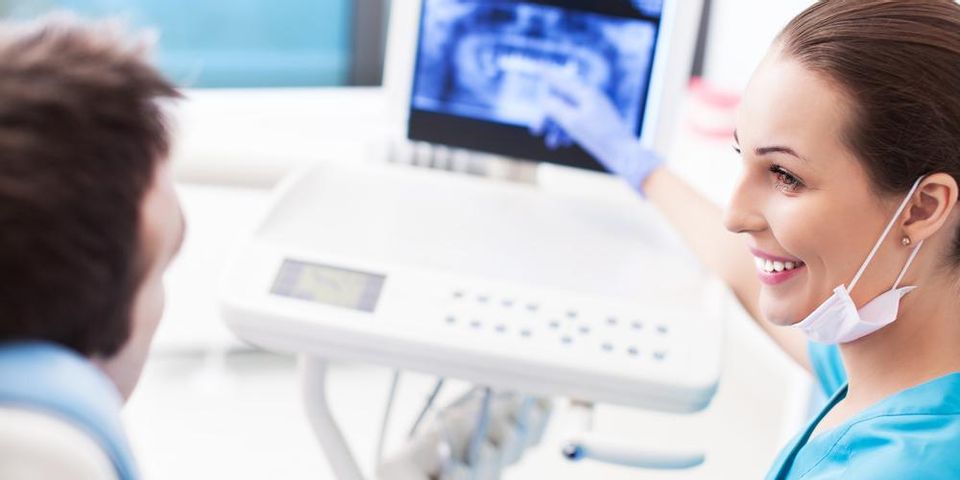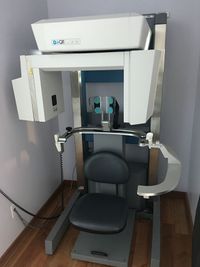
Before any type of oral surgery, your provider will need to take a comprehensive look at the skeletal structure of your mouth. In the past, traditional X-rays and CT scans have been used to guide oral surgeons in their treatment decisions. Today, they have upgraded to the advanced medical imaging offered by i-CAT™ CT scanning devices. If your oral surgeon uses this state-of-the-art equipment, here are a few facts to know about how it works—and why it is preferred over conventional imaging techniques.
Basic Introduction to i-CAT™ CT Scanning
1. What Is the Scanning Process Like?
 The i-CAT CT scanning device has been optimized to accommodate patient comfort. During imaging, you will sit in a comfortable seat and place your head on a stabilized chin rest. Next, a panoramic camera will rotate around your head to take a 360-degree image of your teeth, jaw, sinuses, facial bones, and surrounding nerves and tissues. The whole process can be completed in less than five seconds and results can be immediately reviewed by your oral surgeon.
The i-CAT CT scanning device has been optimized to accommodate patient comfort. During imaging, you will sit in a comfortable seat and place your head on a stabilized chin rest. Next, a panoramic camera will rotate around your head to take a 360-degree image of your teeth, jaw, sinuses, facial bones, and surrounding nerves and tissues. The whole process can be completed in less than five seconds and results can be immediately reviewed by your oral surgeon.
2. How Does i-CAT Differ From Traditional CT Scans?
With a traditional CT scan, fan-shaped beams of X-rays are projected toward the patient to capture images of the individual’s facial bones and tissues. These images are then combined to create a reassembled 2D-image of the patient’s facial anatomy.
By contrast, i-CAT technology projects cone-shaped X-rays, allowing oral surgeons to capture a complete image within a single rotation. This simplified imaging technique has a much wider and realistic field-of-view that specialists can use to make informed treatment decisions. Specifically, surgeons can depend on these images to not only accurately diagnose problem areas, but also visualize how certain solutions will improve the function and appearance of a patient’s mouth.
3. What Procedures Is i-CAT Scanning Used For?
One of the greatest advantages of the i-CAT scanning tool is that it can support many different types of oral surgery. For example, specialists often use this imaging device to determine if wisdom teeth removal is necessary or how dental implants will fit within a patient’s jaw. This technology is also used after procedures to ensure that a patient is healing properly.
If you want to take advantage of the amazing benefits of i-CAT CT scanning, turn to the Oral Surgery Associates of Alaska. Whether you require standard teeth extraction or complex jaw surgery, these Anchorage oral surgeons will utilize this advanced imaging technology to provide you with a safe and effective treatment plan. To learn more, visit this clinic online. For appointments, call a friendly representative at (907) 561-1430.
About the Business
Have a question? Ask the experts!
Send your question

